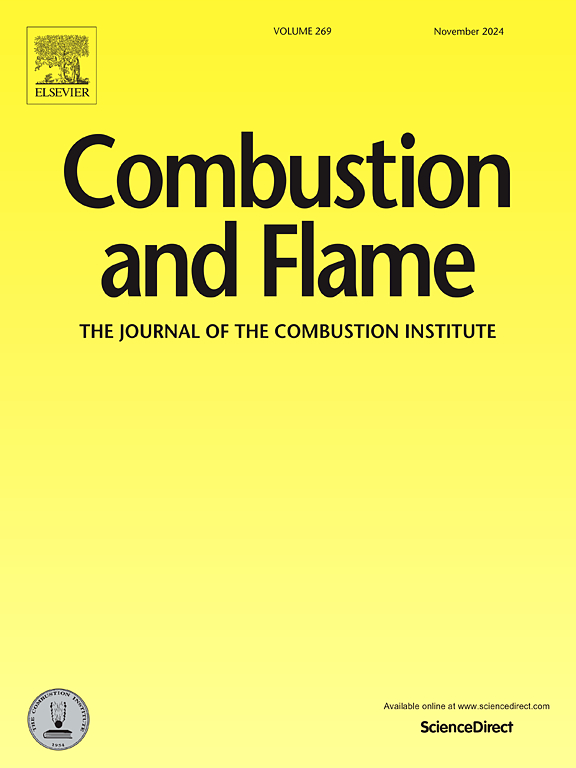Investigation of minimum NOx emissions for cracked ammonia combustion
IF 5.8
2区 工程技术
Q2 ENERGY & FUELS
引用次数: 0
Abstract
Ammonia (NH3) is being evaluated as a carbon-free energy carrier. However, combustion of NH3 leads to potentially significant amounts of NOx emissions as well as flame stabilization challenges. For both reasons, there is interest in partially cracking NH3 and combusting some blend of NH3/H2/N2. Our prior work has evaluated the minimum theoretical NOx emissions from pure NH3 combustion, which is a useful benchmark for evaluating fundamental limits, as well as to evaluate the performance of a given combustion system relative to these theoretical limits. This work is aimed to evaluate the fundamental minimum NOx emissions of partially and fully cracked NH3. Significant NOx benefits are possible with 100% cracked NH3 – i.e., H2/N2 combustion – and the optimal combustion architecture is a lean premixed strategy. However, this lean premixed strategy obviously does not work for partially cracked NH3 combustion. NOx emissions for intermediate cracking fractions exhibit both a highly nonlinear and, in certain pressure regions, a non-monotonic dependence upon cracking fraction – in other words, NOx emissions do not necessarily, linearly decrease with increased cracking. In general, partial cracking does provide NOx benefits in a manner that is highly pressure dependent; for example, minimum theoretical NO emissions decrease by around 90% and 40% between pure NH3 and 90% cracked NH3 at 1 and 20 bar for a system with 20 ms residence time, but a 2% increase in NO is observed for the same system at 4 bar. It is only at cracking levels exceeding about 99% that major NO benefits occur, with minimum NO reaching sub-30 ppm (15% O2 dry) values for all pressures. Moreover, these results show that rich-lean staged systems lead to optimal NOx emissions over cracking fractions from about 0 – 99.9%; it is only above 99.9% cracking ratio that traditional lean premixed combustion strategies show comparable results. These results indicate that only if nearly complete cracking is possible, that NH3 utilization will require retrofitting low NOx combustors from lean premixed systems to rich-lean staged systems. The sensitivity of these results to the choice of kinetic models is also addressed in this work.
求助全文
约1分钟内获得全文
求助全文
来源期刊

Combustion and Flame
工程技术-工程:化工
CiteScore
9.50
自引率
20.50%
发文量
631
审稿时长
3.8 months
期刊介绍:
The mission of the journal is to publish high quality work from experimental, theoretical, and computational investigations on the fundamentals of combustion phenomena and closely allied matters. While submissions in all pertinent areas are welcomed, past and recent focus of the journal has been on:
Development and validation of reaction kinetics, reduction of reaction mechanisms and modeling of combustion systems, including:
Conventional, alternative and surrogate fuels;
Pollutants;
Particulate and aerosol formation and abatement;
Heterogeneous processes.
Experimental, theoretical, and computational studies of laminar and turbulent combustion phenomena, including:
Premixed and non-premixed flames;
Ignition and extinction phenomena;
Flame propagation;
Flame structure;
Instabilities and swirl;
Flame spread;
Multi-phase reactants.
Advances in diagnostic and computational methods in combustion, including:
Measurement and simulation of scalar and vector properties;
Novel techniques;
State-of-the art applications.
Fundamental investigations of combustion technologies and systems, including:
Internal combustion engines;
Gas turbines;
Small- and large-scale stationary combustion and power generation;
Catalytic combustion;
Combustion synthesis;
Combustion under extreme conditions;
New concepts.
 求助内容:
求助内容: 应助结果提醒方式:
应助结果提醒方式:


